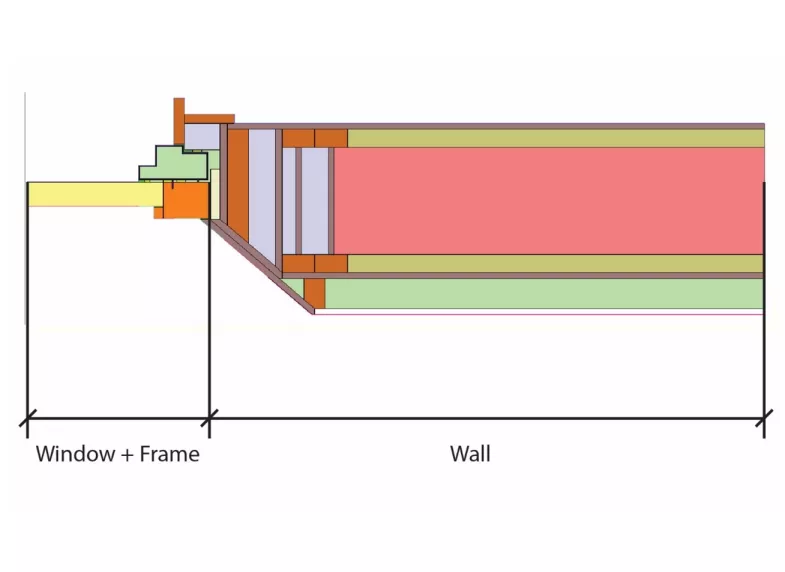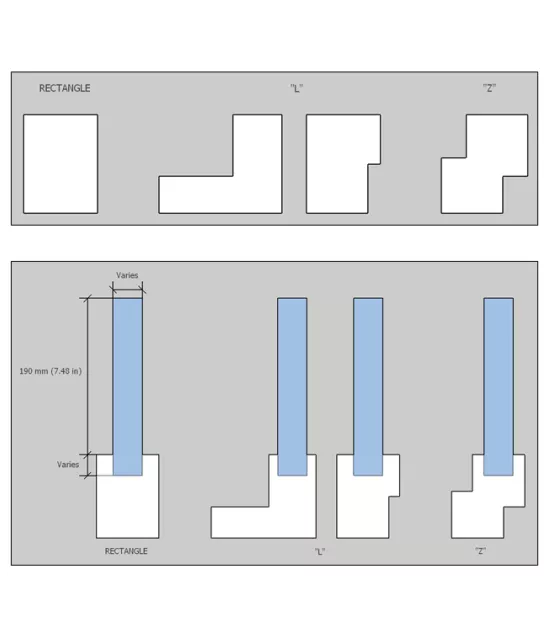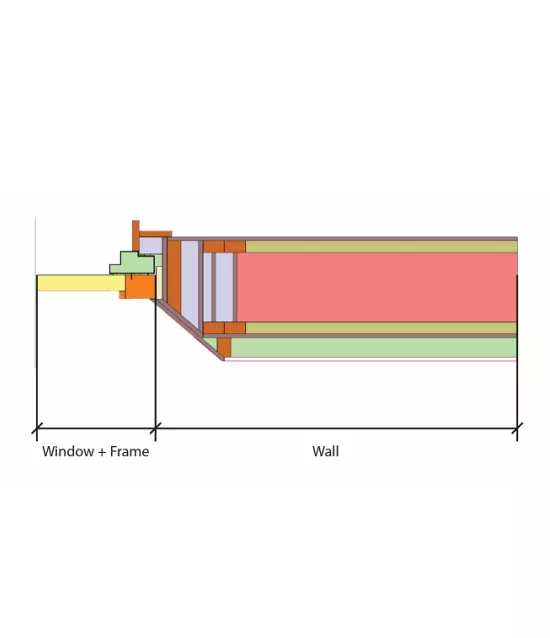Phius Psi-Install (Window Installation) Modeling Protocol
This window installation modeling protocol can be used for any window install detail in lieu of using Phius' default psi-install values.
This window installation modeling protocol can be used for any window install detail in lieu of using Phius' default psi-install values.


1.1. Detailed Spacer Edge Seal Assembly (SESA) models may be simplified as follows, if need be, to get meshing to work.
(Follows NFRC CMA Path I for spacers.) Each SESA performance shall be provided in terms of its effective conductivity, Keff;
The SESA consists of the spacer component, desiccant, and any applicable sealants.
The Keff is defined based on simple review of spacer drawings.
Group 1 – Spacer containing aluminum. If the spacer uses any aluminum in the design it shall be assigned a spacer system Keff of 8.0 W/mC (4.622 Btu/hr-ft- F).
Group 2 – Spacer containing mild steel (i.e. galvanized steel, tin-plated steel). If the spacer uses any mild steel in the design it shall be assigned a spacer system Keff of 3.0 W/mC (1.733 Btu/hr-ft- F).
Group 3 – Spacer containing stainless steel. If the spacer uses any stainless steel in the design it shall be assigned a spacer system Keff of 1.0 W/mC (0.578 Btu/hr-ft- F).
Group 4 – Spacer containing all non-metallic materials. If the spacer uses only non-metallic materials in the design it shall be assigned a spacer system Keff of 0.5 W/mC (0.289 Btu/hr-ft-F). If the spacer design incorporates any metal, it shall fall into either Group 1, 2, or 3.
In the event a spacer contains two metals, the higher conductivity metal shall be used in specifying the spacer group, regardless of the amount of that metal present in the spacer.

Model frame cross sections as one of the following three simplified shapes: Rectangle, “L”, or “Z”. See illustration.
Enclose any broad-shallow bump-outs and cut off any thin-pointy ones such as drip edges.
Make a single rectangular channel ("dado" or "rabbet") in the cross section to accommodate the glazing system. Make the thickness of the channel equal to the actual thickness of the glazing system.
Model the glazing system together with the spacer edge seal assembly as a single rectangular panel, filling the rectangular channel and extending 190 mm (7.48 in) past the sightline.
Make the penetration of the channel into the frame equal to the actual distance between the sightline and the edge of the glazing.
Assign the glazing panel a conductivity of 0.035 W/mK (0.020 Btu/h.ft.F).
Assign the conductivity of the frame member based on the type of window as follows:
|
Frame Type |
Conductivity |
||
|
W/mK |
Btu/hr.ft.F |
||
|
Double Pane |
Metal |
0.539 |
0.310 |
|
0.255 |
0.147 |
||
|
Nonmetal |
0.200 |
0.115 |
|
|
Nonmetal Improved |
0.116 |
0.067 |
|
|
Triple Pane |
0.095 |
0.054 |
|

Lengths to use for the 1D components in the psi-value calculator:
Measure the window from the bottom/side of window frame to the top of the glass pane.
Measure the wall from the bottom/side of window frame to the end of the wall assembly.